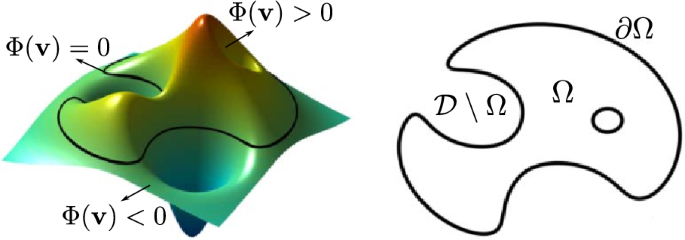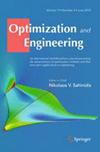Topology optimization of periodic structures for crash and static load cases using the evolutionary level set method
IF 1.7
3区 工程技术
Q2 ENGINEERING, MULTIDISCIPLINARY
引用次数: 0
Abstract
Abstract Assembly complexity and manufacturing costs of engineering structures can be significantly reduced by using periodic mechanical components, which are defined by combining multiple identical unit cells into a global topology. Additionally, the superior energy-absorbing properties of lattice-based periodic structures can potentially enhance the overall performance in crash-related applications. Recent research developments in periodic topology optimization (PTO) have shown its efficacy for tackling new design problems and finding advanced novel structures. However, most of these methods rely on gradient information in the optimization process, which poses difficulties for crash problems where analytical sensitivities are usually not directly applicable. In this paper, we present an effective periodic evolutionary level set method (P-EA-LSM) for the optimization of periodic structures. P-EA-LSM uses a low-dimensional level-set representation based on moving morphable components to parametrize a single unit cell, which is replicated in the design domain according to a predefined pattern. The unit cell is optimized using an evolutionary algorithm and the structural responses are calculated for the entire system. We initially assess the performance of P-EA-LSM using three 2D minimum compliance test cases with varying periodicities. Our results demonstrate that our approach produces solutions comparable to other state-of-the-art methods for PTO while keeping a low dimensionality of the optimization problem. Subsequently, we effectively evaluate the capabilities of P-EA-LSM in a crashworthiness scenario. This particular application highlights the significant potential of the method, which does not rely on analytical sensitivities.

基于演化水平集方法的碰撞和静载情况下周期性结构拓扑优化
摘要周期性机械部件是通过将多个相同的单元单元组合成全局拓扑结构来定义的,可以显著降低工程结构的装配复杂性和制造成本。此外,晶格周期性结构优越的吸能性能可以潜在地提高碰撞相关应用的整体性能。近年来周期性拓扑优化(PTO)在解决新设计问题和寻找先进的新结构方面的研究进展表明了它的有效性。然而,这些方法在优化过程中大多依赖于梯度信息,这给分析灵敏度通常不直接适用的碰撞问题带来了困难。本文提出了一种有效的周期进化水平集优化方法(P-EA-LSM)。P-EA-LSM使用基于移动可变形组件的低维水平集表示来参数化单个单元格,并根据预定义的模式在设计域中复制该单元格。采用进化算法对单元胞进行优化,并计算了整个系统的结构响应。我们最初使用三个具有不同周期的2D最小遵从性测试用例来评估P-EA-LSM的性能。我们的结果表明,我们的方法产生的解决方案可与其他最先进的PTO方法相媲美,同时保持优化问题的低维度。随后,我们有效地评估了P-EA-LSM在耐撞场景中的能力。这种特殊的应用突出了该方法的巨大潜力,它不依赖于分析灵敏度。
本文章由计算机程序翻译,如有差异,请以英文原文为准。
求助全文
约1分钟内获得全文
求助全文
来源期刊

Optimization and Engineering
工程技术-工程:综合
CiteScore
4.80
自引率
14.30%
发文量
73
审稿时长
>12 weeks
期刊介绍:
Optimization and Engineering is a multidisciplinary journal; its primary goal is to promote the application of optimization methods in the general area of engineering sciences. We expect submissions to OPTE not only to make a significant optimization contribution but also to impact a specific engineering application.
Topics of Interest:
-Optimization: All methods and algorithms of mathematical optimization, including blackbox and derivative-free optimization, continuous optimization, discrete optimization, global optimization, linear and conic optimization, multiobjective optimization, PDE-constrained optimization & control, and stochastic optimization. Numerical and implementation issues, optimization software, benchmarking, and case studies.
-Engineering Sciences: Aerospace engineering, biomedical engineering, chemical & process engineering, civil, environmental, & architectural engineering, electrical engineering, financial engineering, geosciences, healthcare engineering, industrial & systems engineering, mechanical engineering & MDO, and robotics.
 求助内容:
求助内容: 应助结果提醒方式:
应助结果提醒方式:


